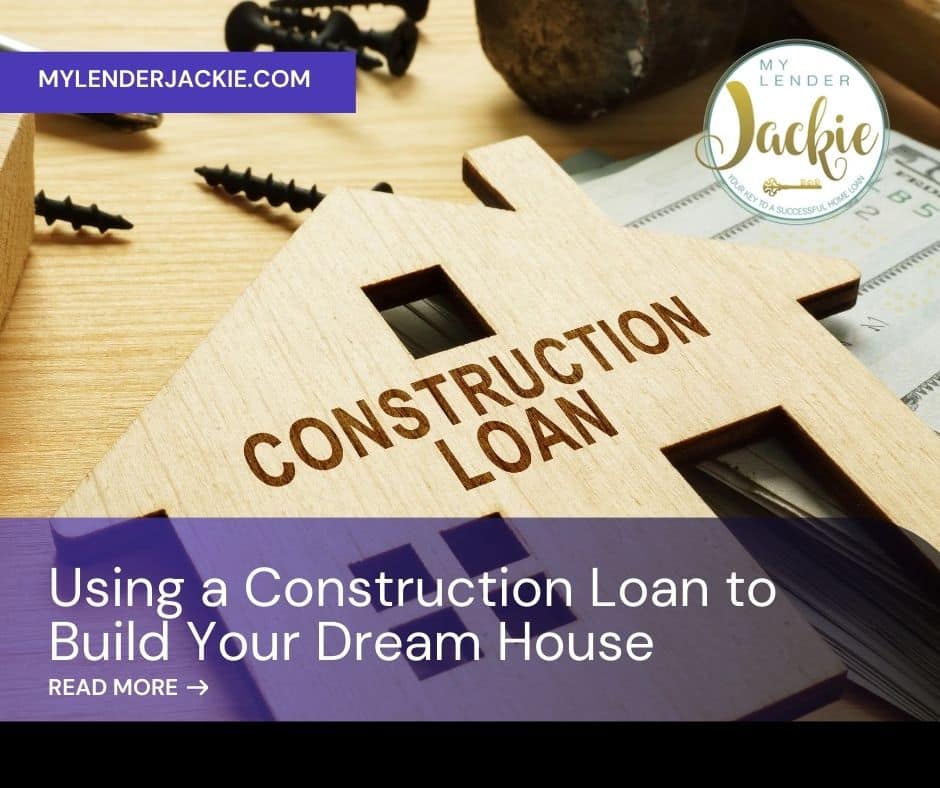Construction loans can be a good option if you are hoping to build a brand new custom home or put some major work into an existing one. Read on to find out more information on construction loans.
What is a Construction Loan?
A construction loan has a shorter term than a traditional mortgage loan and higher interest. It covers the cost of building or renovating a home. A construction loan is paid out to the contractor, not the homeowner/borrower, in installments as building milestones are completed. When the home is completed, the construction loan then converts to a traditional mortgage or is paid out in full.
Types of Construction Loans
Single Close Construction Loan: this loan converts to a mortgage when the home is completed. The interest rate locks in at closing. This is a good option for anyone with a clear and organized construction plan that is looking for a predictable interest rate.
Two Close Construction Loan: this loan requires the lender to pay the loan amount in full at the completion of construction. The borrower will need to qualify, be approved, and pay closing costs more than once. This is a good option for borrowers with large cash reserves or are unclear of who they want their mortgage lender to be on the property.
Renovation Construction Loan: this loan adds the cost of major renovations into a mortgage loan instead of having to finance them after purchasing a property. The loan is based on the predicted home value after the work is completed. This is a good option for home buyers that have found a fixer upper, but do not have the cash on hand to make improvements.
What Will A Construction Loan Pay to Fix?
Each specific loan and lender has its own set of rules of exactly what you can use the borrowed money to improve. Most construction loans generally cover:
- Land
- Plans, permits, fees
- Labor and materials
- Closing costs
- Contingency reserves (should there be unforeseen expenses)
- Interest reserves (if you decide not to pay interest during construction)
- How Construction Loans Work
- Loan for New Construction
Lending money for a home that does not yet exist, means lending with no collateral for the lender, this is risky. There will be some extra qualifying requirements such as a thorough inspection of the building plans, the contractor, and your finances. As mentioned in the beginning of the article, the loan is paid directly to the contractor in increments when certain aspects of the work are complete. For example: when the foundation is built. The payment is called a draw and typically requires an inspection and sign off of completion before payout.
More: 5 Reasons Your Loan May Not Be Approved
Home Remodel Loan
The amount you qualify for on a renovation loan will depend upon a professional appraiser’s estimated valuation of the home once the intended work is complete. The lender will still want to approve the contractor and plans and will also pay in installments to the contractor.
The benefit of choosing a construction loan for renovation instead of an equity line of credit or personal loan is the interest is usually lower and the repayment period is longer.
Qualifying for a Construction Loan
Just like with any mortgage, a lender is going to want to see a required minimum credit score, a healthy debt-to-income ratio, and a sizeable down payment depending upon the specific lender requirement. Generally, lenders are looking for a down payment of 20 to 30%, debts totaling no more than 45% of your income, and a credit score of 680 or higher.
If you are interested in looking into further information on if a construction loan is right for you please contact me at any time.
If you are looking for help refinancing a mortgage in California please contact me anytime.


